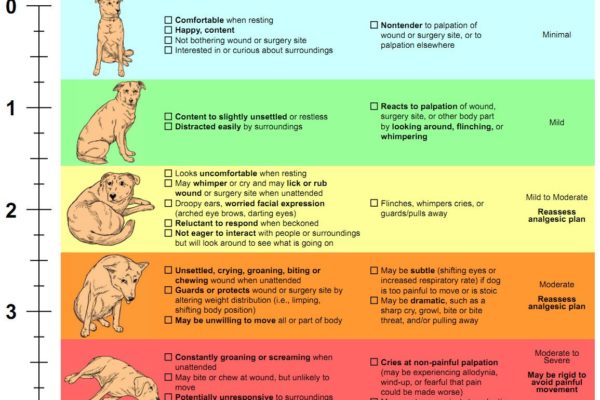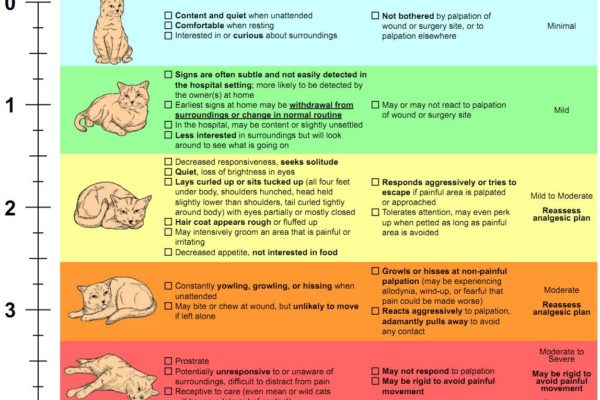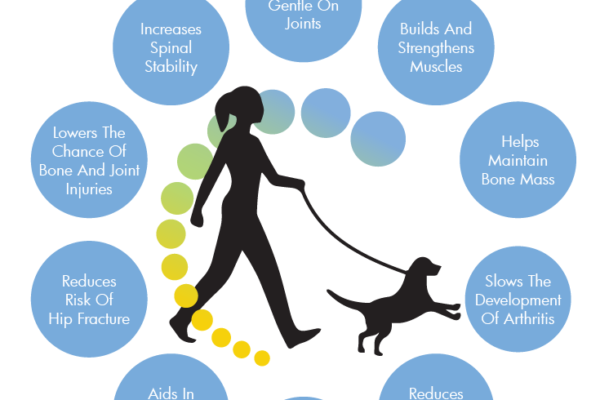 We now know that animals experience pain in much the same way as people. However, pets cannot speak and often are quite adept at hiding signs of pain. In nature, pain is a sign of weakness and – even though dogs and cats have been domesticated for millennia – these animals are reluctant to display overt signs of pain.
We now know that animals experience pain in much the same way as people. However, pets cannot speak and often are quite adept at hiding signs of pain. In nature, pain is a sign of weakness and – even though dogs and cats have been domesticated for millennia – these animals are reluctant to display overt signs of pain.
Many dogs will wag their tails and maintain a happy composure even in the face of great pain. They seem more interested in the happiness of their owner than in their own pain. Others are stoic and brave. Some will be comfortable enough to whine, cry, or whimper. Many will simply hold their head down and their tail between their legs. Others will simply stop doing things you know that they enjoy. They will stop asking to play with toys or to go for walks. They will go shorter distances on walks. They will sleep more and do less. They will avoid stairs or jumping up on high furniture. They will stop following you as you move about the house. They will eat less or stop eating. They will seek out isolation and hide in strange places. Some, might even become more grumpy, ornery, or even aggressive.
Cats can be even more difficult to diagnose with pain than dogs. Cats are very stoic and proud. They will rarely cry out or whimper. It is important to note that PURRING DOES NOT MEAN A CAT IS HAPPY OR PAIN FREE. Even cats in severe pain will and do purr. Cat pain is again most often diagnosed more by what they don’t do, than what they do do. Cats in pain will stop grooming themselves, they will stop playing or exploring, they will stop following you or seeking out attention, they will hide, they will sleep more, they will stop using stairs or jumping up as much, they will eat less or stop eating, they will start refusing to use their litter box. Cats in pain may become more moody, grumpy, or even aggressive. They will not enjoy being pet or touched in certain areas (even places they used to enjoy being pet or touched). They will fight more with other pets in the house.
We use our knowledge of pain to help you diagnose it in your pets. Pain is NOT a normal part of aging. Living pain free is an important factor in quality of life and our goal as veterinary professionals is to prevent, eliminate, or minimize pain in pets. We use many strategies to achieve this:
- optimizing body weight and conditioning
- promoting exercise and nutrition
- promoting anti-inflammatory supplements
- promoting physical therapy
- promoting orthopedic surgery
- promoting alternative therapies like soft laser therapy
- promoting pharmaceutical pain medications
- promoting biologic treatments including monoclonal antibodies
We use pain relief strategies to prevent and manage pain in pets, both before and after surgery and in the event of an injury or infection. We can also ease pain caused by chronic disease, such as cancer or arthritis.
Ask us about our pain management options and plans, which we will tailor to your pet’s medical condition and individual needs. Please call (519) 472-3770 to discuss today.






